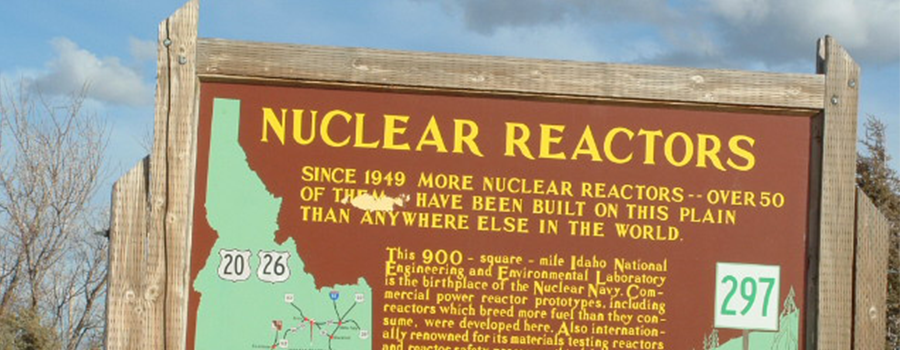
Highway Historical Markers will allow you to connect Idaho’s lush history with her scenic geography, where Idaho’s highways and history intersect. Organized by highway, the guide provides a location and description for over 240 historical markers. The guide is also packed with 90 drawings, maps and old-time photos.
From the caves of prehistoric man to the ruts of the Oregon Trail to the first U.S. city lights powered by atomic energy, you’ll relive the events, places and personalities that have led to the Idaho we have today. Whether in your glove compartment or on your coffee table, this interesting and attractive book makes a great present and traveling companion.
Idaho’s Highway Historical Marker Program was initiated in 1956 by the Idaho’s former state historian, the late Dr. Merle Wells. Wells worked with others to install six experimental markers. Deemed a success, the program continued and is now operated cooperatively by the Idaho Transportation Department (ITD) and the Idaho State Historical Society. To date, over 500 state markers have been installed along Idaho’s highways.
CONTACT US
ADDITIONAL RESOURCES
How to Submit A Proposal for A New Highway Historical Program
There are several steps in the marker program. If you are interested in submitting a marker proposal, please be aware that researching, writing or revising the text, and fabricating a marker can take several months.
Step 1: If you wish to have a highway historical marker installed, contact your local ITD District Traffic Engineer. The District Traffic Engineer will work with you to determine if a location is available for the new marker.
Step 2: If a location is identified, the ITD District Engineer will then submit the request to ITD Headquarters in Boise who, in turn, will consult with the Idaho State Historical Society (Idaho Code Section 67-4117). The applicant can prepare draft text to be reviewed by the Idaho State Historical Society or simply suggest a topic. It is important to remember that the line length and space requirements for the marker format are quite restrictive (see below), so the proposed text must be concise. Also, the topic may not be appropriate (i.e., redundant, too narrow, too broad) in the context of the statewide program.
Step 3: The Idaho State Historical Society researches the topic and edits the text for content and format, as necessary. Once completed, the revised text goes back to ITD for final review by ITD and the applicant.
Step 4: ITD fabricates and installs the marker.
For more information, contact the State Historic Preservation Office (SHPO) at (208) 334-3861.
Guidelines for Creating Text for A Historical Highway Marker
Maximum Text for Historical Marker:
On a typical 4’x8′ Historical marker, the following rule of thumb applies to the text/line.
QUANTITY, LETTER SIZE & NOTES ON LAYOUT
16 5″ letters/line, max. This is the top line, generally a single line. If more than one line of 5″ text is required, reduce all subsequent lines.
35 2″ letters/line, max This is the sub-heading. Typically 3 to 4 lines of 2″ text. Same reduction applies for additional lines.
40 1″ letters/line, max. This is the body. Max 7 lines of 1″ text if 4 lines of 2″ are used. Max 9 lines of 1″ text if 3 lines of 2″ text are used.

